
|
| |
|
|
|
|
 |
|
|
A Brief History of Old Ironsides
 |

A Brief History of Old Ironsides
They were the first! The first US armoured division, the first overseas, the first into Africa, the first the face the Germans, the first to Rome. They were the template of all those that came after.
|
The Name
The 1st Armored Division first got its name, Old Ironsides, during the Tennessee Manoeuvres of 1941 when General George S. Patton christened his 2nd Armored Division "Hell on Wheels". The men and officers of the 1st Armored Division decided they also needed a nickname.
General Magruder announced a competition among the men to the 1st Armored to come up with a name. Over 200 entries were received but to Magruder none of them seemed suitable as a name for his division. While contemplating at his desk he gazed up at the picture of the USS Constitution, one of the first US warships, in his office and remembered the old ships nickname "Old Ironsides". The 1st Armored Division had its nickname. |
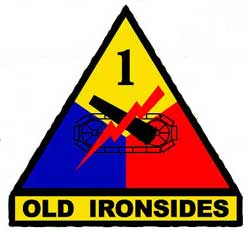 |
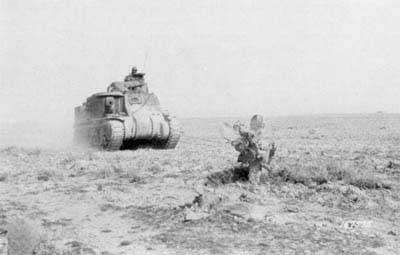 |
Forming the Division
The 1st and 2nd Armored Divisions were created in 1940 from existing armoured troops. The lightning speed in which the Germans rolled through Poland in 1939 and France in 1940 highlighted the importance of having a large armoured force. 1941 and 1942 were spent assembling the two new divisions. Much time was needed to assemble the equipment, train recruits and organise the divisions.
In April 1942 Old Ironsides was shipped to Northern Ireland under the command of Major General Orland Ward. |
|
First Action
Old Ironsides were sent into battle in November 1942, they were tasked with the capture Oran in Algeria while their brothers in Hell on Wheels sailed directly from the United States to land in Morocco to take Casablanca under the command of General Earnest N. Harmon. Both cities were quickly seized from their Vichy French (Pro-German southern French state) defenders.
After three days fighting against sometimes tough resistance the French surrendered on November 11. The combined US and British force lost a total of 1500 casualties while the Vichy French lost over 4000 men in the fighting. Old Ironsides had emerged from its first fight victorious.
|
|
Leading the way
Old Ironsides was soon sent into action again and were rushed towards Tunis with the aim of beating the Germans there. On November 26 Old Ironsides’ 13th Armored Regiment clashed with the 10th Panzer Division near Tebourba. It was the first of many lessons hand out by the veteran troops of the Afrika Korps and Old Ironsides’ inexperienced troops soon learned to respect the skills of the Germans. By late December the rains had arrived making progress towards Tunis all but impossible, the race for Tunis had halted.
In January 1943 the rest of Old Ironsides joined the division from Britain, with them came the new M4 Sherman medium tanks.
|
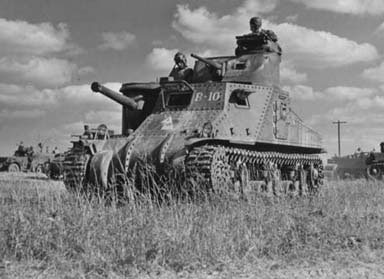 |
| The Division was not fighting as a whole body though and its many parts were spread throughout the American force in Battalion sized groups, supporting the II Corps and the French XIX Corps (now fighting on the side of the Allies). |
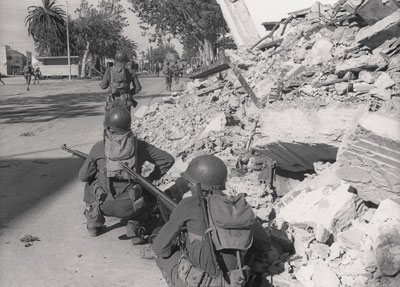 |
Old Ironsides had success again supporting the French taking the Ousseltia Valley. They were soon fighting again as the Germans launched a major attack in the south of Tunisia, the Germans achieved a major breakthrough, Old Ironsides suffering at the hands of the German Panzers as their M4 Sherman battalion made isolated counter-attacks.
The remainder of the Division rallied behind Kasserine Pass. Command of the battle was handed over to Major General Harmon; he was able to halt the Germans west of Kasserine Pass.
After the battle Harmon returned to Hell on Wheels, but recommended Major General Patton take over the II Corps.
|
|
Patton was soon at home and launched his own offensive in March; they pushed for the coast with the aim of cutting off the Afrika Korps facing the British 8th Army. The end of March saw Old Ironsides first clear victory against the German Panzers at the battle of El Guettar. It was Major General Ward’s last battle with Old Ironsides before he was replaced by Harmon.
Old Ironsides were moved back to the northern sector where they took the port of Bizerte after two weeks of hard fighting in late April. The Axis forces in North Africa surrendered on 12 May, the Allies captured over 250,000 German and Italian troops.
|
Italy
During Operation Husky Old Ironsides stayed in North Africa to rest and refit while Hell on Wheels took part in the invasion of Sicily. Some elements of the division were ready in time for the invasion of mainland Italy when the 5th Army landed at Salerno.
Old Ironsides spent the remainder of 1943 in reserve waiting for the breakthrough of the Axis lines, but the mountainous terrain of Italy made progress slow. On the January 4 1944 the 6th Armored Infantry Regiment was called forward to take Mount Porchia. They were able to help force the enemy out of the Winter Line, back to their next line of defences the Gustav Line, dominated by the heights of Monte Cassino. |
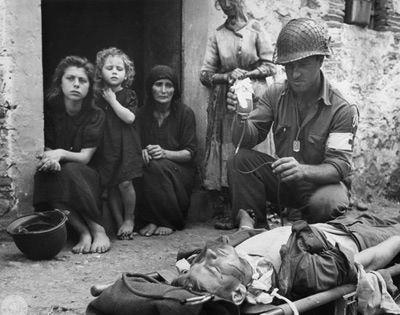 |
|
On January 22 Old Ironsides landed at Anzio to the North of the Gustav Line, the plan was to out flank the German positions. Even though the landings were unopposed the US commander General John P. Lucus delayed on the beach while further equipment and supplies were brought ashore. The Germans were able to rush re-enforcements towards the beachhead, launching many counter-attacks to throw the US force back into the sea.
Old Ironsides saw much action, and for a month the landing was in a perilous position. Old Ironsides were wherever they were needed; defending whatever beachhead was most threatened.
|
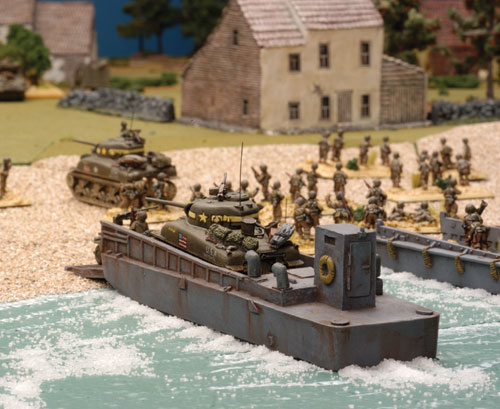 |
By February 19 the Beach head was only a mere 8 miles clear of Anzio, but stubborn defence, concentrated artillery fire, air attacks and Naval fire halted the German advance. The spring mud also slowed the attacking Germans.
The Final fall of Monte Cassino on May 12 relieved the pressure on the forces landing at Anzio and they were able to advance from their beachhead. Old Ironsides attacked towards Rome on May 24, capturing the city on June 5 1944, a Day before the invasion of Normandy began.
The End
During the rest of 1944 Old Ironsides reorganised and continued their campaign through Italy finally ending the war in 1945 in Northern Italy’s Po Valley.
|
Last Updated On Thursday, April 11, 2024 by Kevin
|
|
|